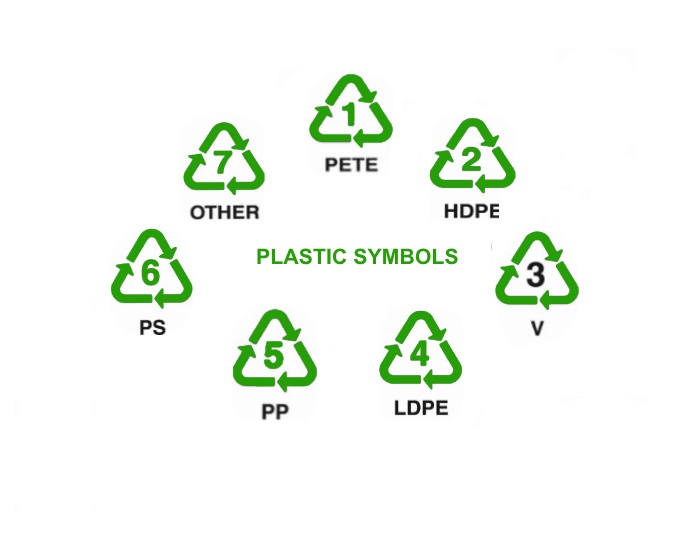Is this bagel bag okay to put in the recycling? Is it true that paper coffee cups have a plastic coating? Can I recycle this smoothie cup?
Questions like these haunt me daily, and without the answers, recycling becomes a complicated process. This can be off-putting for a lot of people trying to be more conscious of their impact on the environment. That's why I want to shed some light on the do's and don'ts of recycling.
Let's start with the basics
Recycling isn't all black and white, but there are a few things you definitely shouldn't recycle at home. These include plastic bags, bin liners and cling wrap. These plastics can get stuck in the sorting machines at recycling factories and can cause them to stop or become damaged. The method used to recycle the things in your household bin is called Single Stream Recycling, a complex process of sorting.
To avoid sending these plastics to landfill, try taking your own canvas bags to the supermarket, or better yet, shop at your local food market or co-op! Bin liners can be replaced with newspaper sheets and cling wrap with aluminum foil or paper bags, these are also great for replacing zip lock bags.
A lot of your plastic waste can be recycled though; it's just a matter of knowing which is which and where to put the tricky things!

Image: Machinex recycling
Which is which?
There are all different types of plastic, some of them you can recycle, some of them you can't. These are the seven common ones:
- 1.PET (Polyethylene terephthalate) - soft drink and fruit juice bottles
- 2.HDPE (High-density polyethylene) - milk bottles, shampoo containers, cereal box liners
- 3.PVC (Polyvinyl chloride or plasticised polyvinyl chloride) - cordial, juice or squeeze bottles
- 4.LDPE (Low density polyethylene) – garbage bags and bins
- 5.PP (Polypropylene) – ice cream containers, take-away food containers and lunch boxes
- 6.PS (Polystyrene) – yoghurt containers, plastic cutlery, foam hot drink cups
- 7.Other – all other plastics, including acrylic and nylon

In most areas, plastics labelled 1, 2, and 3 can be put into your household recycling bin, this means your clean juice bottles, milk cartons, shampoo containers and much more. Fortunately, many councils are now extending their recycling programs to include plastics 4- 7, so things like ice cream tubs, and take away containers. To avoid contamination of recyclables -which raises costs for collectors, recyclers and the community- it's best to check with your local council which ones are safe for your bin and to wash your containers and bottles before recycling!
The tricky things
With three bins to choose from, seven different types of plastic and a bunch of confusing numbers and symbols, it's difficult to determine what goes where.
Disposable coffee cups
Whilst made predominantly out of paper, most disposable cups are coated with a layer of polyethylene plastic. These are not recyclable and will release methane gas when sent to landfill, a greenhouse gas 21 times the global warming potential of carbon dioxide. Keep cups or travel mugs are an environmentally safe way to enjoy your coffee and decrease your carbon footprint!

Image by Chandru Ramkumar.
Disposable coffee cup lids
Before I had my KeepCup I would put my coffee cup in the recycling and the lid in the general waste bin. I was surprised to learn that it's actually the other way around. As long as the plastic lid has one of the recycling symbols (1-6) and it's clean, it's safe to put in the recycling bin!
Tea Bags
What to do with your tea bags depends on their type. Different companies make their tea bags out of all different things, some cellulose and propylene, some synthetic or organic cotton others 100% oxygen bleached paper bags. Tea bags made from cellulose and propylene plastic can be composted, as long as you don't mind tiny traces of this plastic in your compost. Organic cotton and oxygen bleached tea bags can also go in the compost bin. If you're not sure I'd suggest ripping open the tea bag and chucking the loose leaves onto your compost pile or garden bed.
Plastic bottle tops
Every council is different, and with plastic bottle tops its best to do some research into the standards of your local recycling service to determine whether or not they belong in the red bin or the yellow bin. Bottle tops creating a problem in the sorting process, if a bottle has its cap on, it most likely there's still liquid and air trapped in there which makes the bottle heavier and creates problems during the sorting process. Always take the caps off of your bottles and check with your local council to see if they support bottle top recycling!
Recycling can be a confusing process, but we all know how important it is to reducing our carbon footprint and practicing sustainable living for a better future!
Have more questions about what you can recycle? Let us know in the comments below!
READ THIS NEXT: Plastic Free Forever: How to break up with plastic once and for all
1Million Women is more than our name, it's our goal! We're building a movement of strong, inspirational women acting on climate change by leading low-carbon lives. To make sure that our message has an impact, we need more women adding their voice. We need to be louder. Joining us online means your voice and actions can be counted. We need you.

